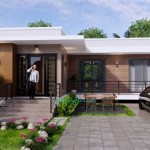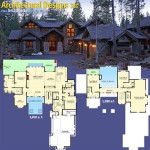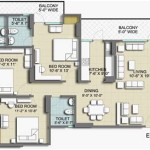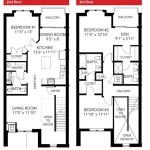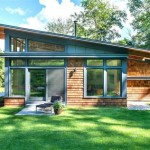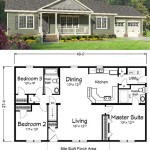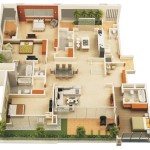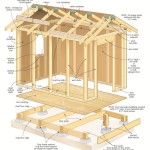House Plans On Sloping Lot: Navigating Challenges and Maximizing Potential
Building a house on a sloping lot presents unique challenges and opportunities. Unlike flat terrain, sloping lots require specialized house plans that address issues like drainage, stability, and accessibility. However, strategically designed homes on these lots can offer stunning views, natural light, and creative architectural solutions that are simply not possible on level ground. This article explores the considerations, types of house plans, and advantages associated with building on a sloping lot.
Before even considering specific house plans, a thorough site assessment is crucial. This assessment should involve a geotechnical engineer who can analyze the soil composition, determine the slope's stability, and identify potential risks such as landslides or erosion. The engineer's report will inform the foundation design and any necessary retaining structures. Additionally, a surveyor should accurately map the topography of the lot, including elevation changes, existing vegetation, and drainage patterns. This comprehensive understanding of the site is fundamental for developing a successful and safe house plan.
The orientation of the house on the slope is also critical. Consider the prevailing winds, sun exposure, and views. Optimizing these factors can significantly impact energy efficiency and the overall comfort of the home. For example, positioning the main living areas to face south can maximize solar gain during the winter months, while strategically placed windows can capture cooling breezes and offer panoramic vistas. Conversely, minimizing western exposure can reduce afternoon heat gain, especially in warmer climates.
Key Considerations in House Plans for Sloping Lots
Designing a house for a sloping lot demands attention to several key factors. These considerations directly influence the structural integrity, usability, and aesthetic appeal of the final product.
First, proper drainage is paramount. Sloping lots naturally channel water, and if this flow is not managed effectively, it can lead to erosion, foundation damage, and flooding. House plans must incorporate robust drainage systems, including French drains, swales, and strategically placed gutters. The design should direct water away from the foundation and towards designated drainage areas. Impermeable surfaces, such as driveways and patios, should be sloped to facilitate runoff.
Second, foundation design is critical for stability. The most common foundation types for sloping lots are slab-on-grade, crawl space, and basement foundations. The choice depends on the severity of the slope, soil conditions, and the desired functionality of the space. Slab-on-grade foundations are typically used for gentle slopes, while crawl space foundations provide access for utilities and allow for better ventilation. Basement foundations are well-suited for steeper slopes, offering additional living space or storage but requiring careful waterproofing and drainage.
Third, accessibility must be carefully considered. Sloping lots can present challenges for entering and exiting the house, particularly for individuals with mobility limitations. House plans should incorporate features such as gently sloping walkways, ramps, and strategically placed entrances at different elevations. Universal design principles should be applied to ensure that the home is accessible to people of all ages and abilities.
Types of House Plans for Sloping Lots
Several architectural styles and house plan types are particularly well-suited for sloping lots. Each offers unique advantages in terms of aesthetics, functionality, and cost-effectiveness.
Walkout Basement Homes: These homes take advantage of the natural slope to create a basement level that is partially or fully exposed at the rear of the house. This allows for natural light and direct access to the backyard, effectively turning the basement into a usable living space. Walkout basements are ideal for recreation rooms, home offices, or guest suites. The foundation walls act as retaining walls, providing structural support for the house and the slope itself.
Split-Level Homes: Split-level homes feature multiple levels that are staggered vertically, typically with short sets of stairs connecting the levels. This design allows the house to follow the contour of the slope, minimizing the amount of excavation required. Split-level homes are often more affordable to build on sloping lots compared to other designs, as they require less extensive foundation work. They can also offer good separation of living spaces, with bedrooms on one level and living areas on another.
Raised Ranch Homes: Raised ranch homes are similar to split-level homes, but with only two main levels. The entrance is typically located at ground level, with a short flight of stairs leading up to the main living area and another flight leading down to the basement. Raised ranch homes are a cost-effective option for sloping lots and can be adapted to various architectural styles. The basement can be finished to create additional living space or used for storage.
Stepped Foundations: This is not a specific house type, but rather a foundation design technique. On very steep slopes, a stepped foundation may be necessary. This involves creating a series of level platforms at different elevations, upon which the house is built. Stepped foundations require careful engineering and can be more expensive than other options, but they allow for building on extremely challenging terrain.
Advantages of Building on a Sloping Lot
While building on a sloping lot presents its own set of challenges, it also offers several distinct advantages that can significantly enhance the value and appeal of a home.
Enhanced Views: Sloping lots often provide unparalleled views of the surrounding landscape. The elevated position allows for unobstructed vistas, creating a sense of privacy and tranquility. Strategic placement of windows and balconies can maximize these views, bringing natural light and beauty into the home.
Natural Light and Ventilation: Homes built on sloping lots often benefit from increased natural light and ventilation. The slope allows for larger windows and more expansive glazing, which can brighten interior spaces and reduce the need for artificial lighting. The natural airflow created by the slope can also improve ventilation and reduce energy consumption for cooling.
Creative Architectural Opportunities: Sloping lots can inspire creative and innovative architectural designs. The unique topography allows for the integration of features such as retaining walls, terraced gardens, and outdoor living spaces that seamlessly blend with the natural environment. These design elements can add character and value to the home.
Privacy and Seclusion: Sloping lots often offer greater privacy and seclusion compared to flat lots. The elevation change can create a natural buffer from neighbors and street traffic, enhancing the sense of tranquility and seclusion. Strategic landscaping can further enhance privacy and create a more secluded outdoor living space.
In conclusion, house plans for sloping lots require careful planning and attention to detail. By addressing the challenges and capitalizing on the opportunities, it is possible to create a beautiful, functional, and sustainable home that takes full advantage of the unique characteristics of the site. Consulting with experienced architects, engineers, and builders is essential for ensuring a successful project.

Plan 51696 Traditional Hillside Home With 1736 Sq Ft 3 Be

House Plans For A Sloped Lot Dfd Blog

Modern House Plan Sloping Lot Contemporary Style 5590 Vista

Sloping Lot Contemporary Style House Plan 1100 Sundown

House Plans Home Designs

Duplex For A Down Sloping Lot 8188lb Architectural Designs House Plans

Plan 6865am Contemporary Home For A Sloping Lot House Plans Craftsman

Sloping Lot House Plan Four Bedrooms Living Room On The Second Floor Mountain Plans

Home Plan Ch507

Dream House Plans For Sloping Sloped Lots

